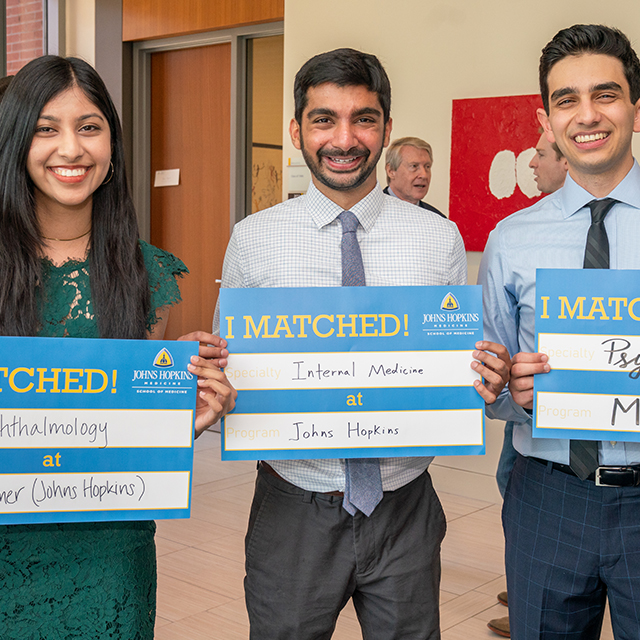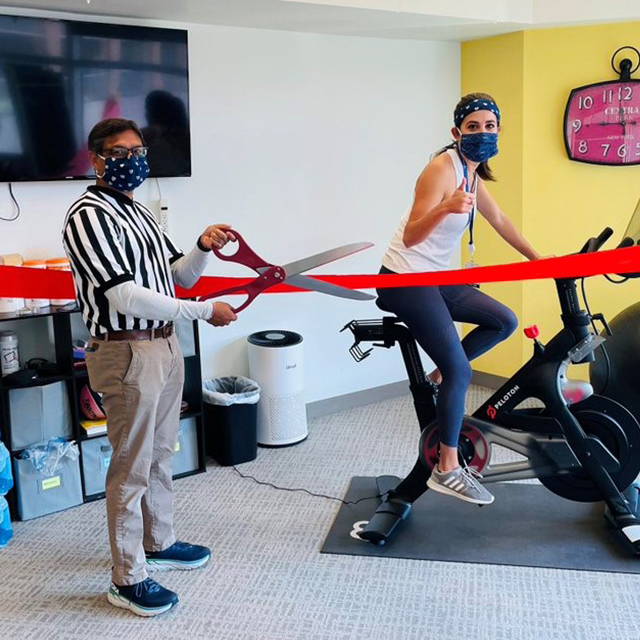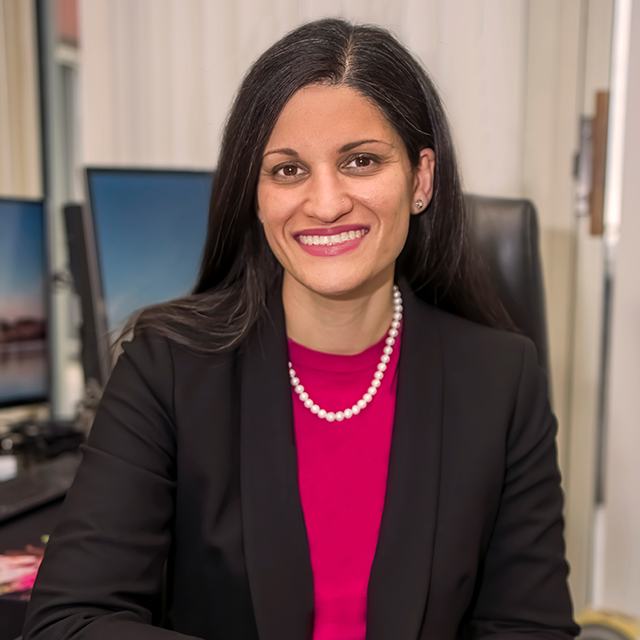As a Johns Hopkins medical student learning clinical skills, Charles “Chuck” Tuchinda (Thayer, 2004) had a difficult time understanding what a “harsh” cardiac murmur sounded like. Was it loud? Was it a mix of low- and high-frequency sounds, like static? He thought it would be possible to leverage the “multimedia” capabilities of computers to help teach clinical skills. Together with mentor W. Reid Thompson, Tuchinda created a database of pediatric heart sound recordings, considered the largest in the world, he says, “with gold-standard echo diagnosis, EKG, sounds from multiple auscultation points across a patient’s body, and each recording long enough to capture several breath cycles that slightly shape the heart sound.” The Cardiac Auscultatory Recording Database has become a trusted resource, helping clinicians learn to screen for cardiac abnormalities by simply listening.
The database wasn’t Tuchinda’s first medical software invention. As a medical student, Tuchinda created PagerBox, a web-to-mobile messaging platform for hospital-wide communication that reengineered the process of inpatient health care practice. He partnered with oncologist Luis Diaz (Osler, 1998) to drive the platform’s adoption at Johns Hopkins, and it has since been replaced by messaging tool PING. He also developed an online ambulatory practice education system (JHIMIPACE), which had 1,400 users in the first year, and a radiology order-entry platform (3RADS) that processed more than 5,000 tests per month.
A Pittsburgh, Pennsylvania, native, Tuchinda earned his bachelor’s degree in biomedical engineering from Harvard in 1997, and his medical degree from Johns Hopkins in 2001. After completing his Osler residency, Tuchinda earned a master’s degree in business administration from Harvard Business School. He went on to assume executive roles at health care information technology solutions vendor Eclipsys (acquired by Allscripts). At Eclipsys, he introduced three new medical information technology products, garnering $25 million in new business revenue, and led the acute care solutions product line known as Sunrise Clinical Manager.
Tuchinda joined Hearst in 2010, serving as chief innovation officer for health care. He created an incubator that launched a new product platform used by over 200 health systems. Four years later, he was promoted to president of Hearst subsidiary First Databank, a market-leading provider of clinical drug knowledge integrated into health care information systems. While focusing on client satisfaction, he led the company through back-to-back years of double-digit growth through multiple product launches and expansion around the globe. In 2018, he was promoted to co-lead the newly created Hearst Health division, and in 2019, added day-to-day responsibility over Zynx Health as president.
Tuchinda and his wife, pediatric cardiologist Lynn Peng, who also completed her medical degree at Johns Hopkins in 2001 and pediatric residency at Johns Hopkins in 2004, have two teenage daughters and live in the San Francisco Bay Area.
When did you know you needed to pursue a career in developing health information technology?
During my training, I saw the need for more evidence-based care. I felt that the future of medicine would involve clinicians working with electronic medical record systems, and I feared that these systems would work analogously to a cash register at a store. Instead of scanning products, clinicians would enter symptoms and clinical findings, and the system would tell us what to do. I knew that I needed to get on the other side — to have a hand in shaping these platforms and make them effective tools for improving care. Having built software for research and the teaching of cardiac auscultation, I believed that information technology could accelerate workflows, personalize treatment and make care safer. Our company’s products aim to do that, and are used by physicians, nurses, pharmacists, claims adjusters and patients.
Growing up, who were your role models?
I’m told that I’m the 43rd doctor in my family. My wife, sister and brother-in-law are also doctors. So are most of my cousins, aunts and uncles.
Although my father’s father was president of the World Health Organization, I would have to reluctantly admit that my parents are my role models. My dad was a cardiologist, and my mom was a pediatrician at the University of Pittsburgh Medical Center. She served as the medical director of a community health center in the “projects” of Pittsburgh, and inspired me to pursue endeavors that have positive impact. My father was quite entrepreneurial for a private-practice cardiologist, dabbling with owning a reference lab, nuclear medicine center, echo lab and other health care-related ventures, when it was possible to do so. He likely inspired my interest in the business surrounding medicine.
Who inspired you at Johns Hopkins?
I view Tom Traill as a master clinician. He taught me how to see things in our bodies that people take for granted — such as seeing the “a” and “v” waves in jugular veins. Stephen “Steve” Achuff was a great teacher and an early proponent of using technology for medical records — this opened my eyes to a career that could apply information technology to the delivery of care. And, Charlie Wiener kept me focused on finishing the Osler training program, through which I ultimately learned some indispensable lessons on team leadership.
How has your Osler experience informed your career?
Two broad lessons came out of it: first, the value of being patient-centric and second, the importance of staying committed to an objective, especially when the “system” of care is not organized to help.
In my business career, these lessons have translated into making sure that my clients are successful. We try to “wear our clients’ shoes” and do everything in our power to help them achieve their goals. It’s incredible to work with a team where the culture requires you to help make the patient better (Hopkins) or the client satisfied (Hearst). Our commitment to each patient or client can matter as it inspires others to help.
Finally, I would say that my residency also taught me a lot about physical and mental endurance. We learned our limits and stretched them. In the business world, this becomes somewhat of a competitive advantage — knowing that you can work longer than almost anyone else, if needed.
Which innovations are you most proud of?
One of them is FDB AlertSpace. It’s designed to improve the alert system in many electronic health record systems, and can reduce the “alert fatigue” that clinicians suffer from. We wanted to build a system that would work with major electronic health records and cut out the noise, so that each message has more meaning. AlertSpace went from the drawing board to clients in about six months.
Subsequently, we made several additional products, including an opioid management system to prevent overdoses and dangerous drug combinations; pharmacogenomic alerts that warn clinicians when patients might be sensitive to certain drugs or dosages based on their genetics; and personalized medication information in more than 20 languages that teaches patients how and when to take their meds.
How do you feel about the impact of your work?
Overall, our work is about giving people the information they need to make better health decisions. It’s not only gratifying; it’s also really fun.



